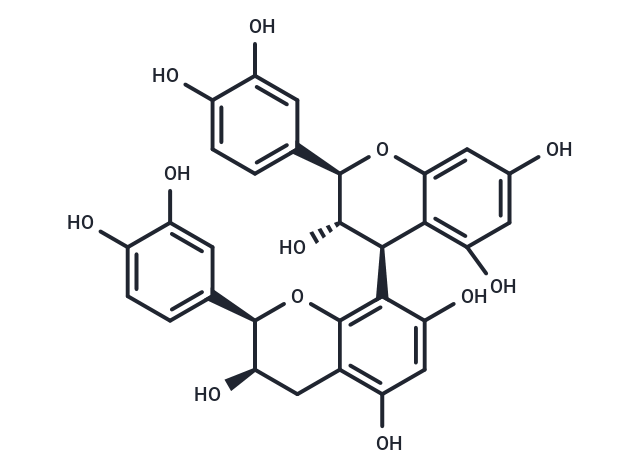Shopping Cart
- Remove All
 Your shopping cart is currently empty
Your shopping cart is currently empty
Procyanidin B4 reveals significant antioxidant activity

| Pack Size | Price | Availability | Quantity |
|---|---|---|---|
| 1 mg | $397 | 35 days | |
| 5 mg | $1,880 | 35 days | |
| 10 mg | $3,620 | 35 days |
| Description | Procyanidin B4 reveals significant antioxidant activity |
| Synonyms | Procyanidin B4 |
| Molecular Weight | 578.52 |
| Formula | C30H26O12 |
| Cas No. | 29106-51-2 |
| Relative Density. | 1.705 g/cm3 (Predicted) |
| Storage | Powder: -20°C for 3 years | In solvent: -80°C for 1 year | Shipping with blue ice/Shipping at ambient temperature. |

Copyright © 2015-2025 TargetMol Chemicals Inc. All Rights Reserved.